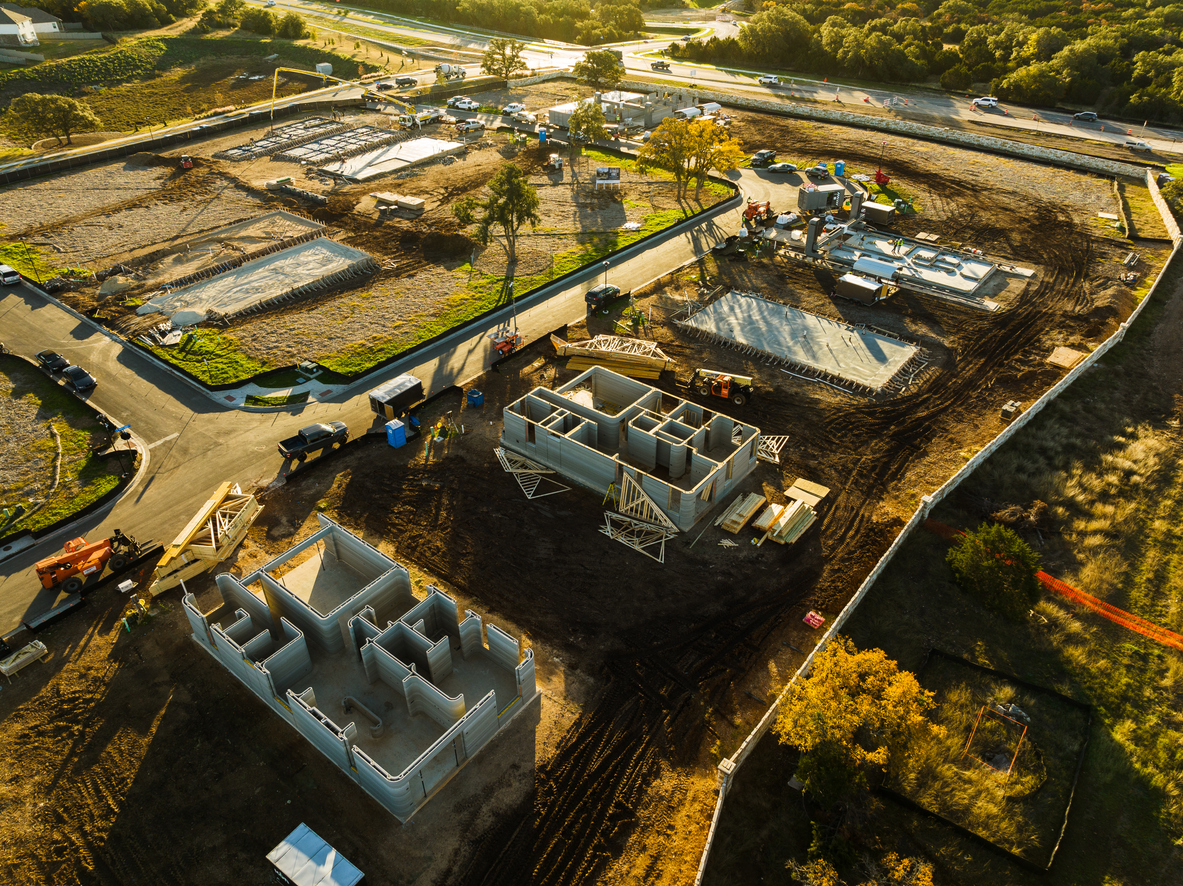Revolutionizing Construction: Exploring the World of 3D Printed Homes
How will this technology revolutionize California’s housing market?
In our creative state of California, where we take pride in technological advancements and architectural innovation as part of the daily norm, a groundbreaking development is reshaping the way we think about construction and housing. Enter 3D printer-generated homes, an ingenious solution that has captured the imagination of builders, architects, and homeowners alike.
How does this technology work?
By now, most everyone is familiar with the concept of 3D printers, even if we don’t all know what they are really capable of creating. 3D printed homes are an amazing innovation emerging within the construction industry. This revolutionary technology has the potential to transform the way we build houses, offering numerous benefits ranging from cost-efficiency to design flexibility. Let’s consider exactly how the emerging technology of 3D printed homes is reshaping the future of construction.
The Basics of 3D Printed Homes:
Essentially, 3D printing involves creating three-dimensional objects layer by layer, based on digital designs. Designers are using 3D printers to create product models and prototypes. However, they are increasingly using 3D printers to make final products – everything from toys, phone cases, tools, furniture, lamps, art, guns, and yes, even cars and homes.
3D printed homes follow the same principle as creating other products, but they utilize much larger-scale 3D printers capable of constructing entire houses. These printers use specialized construction materials, such as concrete or composite mixtures, which are extruded in precise patterns to create a structure, layer on layer.
Advantages of 3D Printed Homes
Cost-Efficiency
One of the primary advantages of 3D printed homes is their potential for significant cost savings. Costly materials and labor-intensive processes can often be minimized by employing automated processes. The precise nature of 3D printing ensures optimal material usage, which results in less construction waste compared to traditional building methods. With the advent of 3D printing technology, the construction industry is undergoing a paradigm shift. This has the potential to make housing more affordable and accessible.
Design Flexibility
3D printed homes do not limit design options. In fact, they offer unparalleled design flexibility, enabling architects and designers to create intricate and customized structures. The precision layer-by-layer construction method allows for complex architectural elements, curves, and organic shapes that were previously challenging to achieve with traditional construction techniques. With 3D printer-generated homes, homeowners can unlock a world of design possibilities. These homes are a testament to the marriage of technology and design, catering to the individual preferences and needs of homeowners.
Sustainability
Sustainability is a key aspect of 3D printed homes. Are you looking for eco-friendly construction materials? 3D printed homes can use recycled concrete, which minimizes environmental impact. Additionally, the reduced construction time and waste generation from wooden construction contribute to a smaller carbon footprint. Some 3D printed homes can also incorporate energy-efficient features, such as improved insulation and integrated smart systems, which enhance sustainability.
Addressing California’s Housing Crisis
Californians are always seeking ways to deal with the density issues and soaring real estate prices faced by residents. Recent legislation has put pressure on localities to find creative ways to address our severe housing shortage. This crisis has left countless individuals struggling to find affordable and sustainable housing options. 3D printer-generated homes offer a glimmer of hope. This construction option could potentially alleviate the housing crunch by providing a faster, more cost-efficient way to build homes without compromising quality or design.
Speed and Efficiency
One of the most striking advantages of 3D printer-generated homes is their speed of construction. Unlike traditional methods that can take months or even a year to complete, 3D printing can erect a fully functional house in a matter of days.
Future Outlook
The future of 3D printed homes appears promising. As the technology continues to advance, we may see increased adoption and refinement of construction techniques. The potential impact of 3D printed homes can extend beyond individual houses. Think of the possibilities for affordable housing initiatives, sustainable urban development and disaster-relief housing.
The emergence of California’s 2022 codes allowing 3D printer-generated homes marks a significant milestone in the evolution of construction and housing. This innovative approach offers a glimmer of hope for addressing our state’s housing crisis, delivering faster, more affordable and sustainable housing solutions. As the technology evolves and gains traction, it has the potential to redefine the way we build homes, opening up a world of possibilities for future homeowners and architects alike. With 3D printing paving the way, California’s housing market could be primed for a remarkable transformation.
If you would like to discuss the innovations this technology offers, contact us today.


